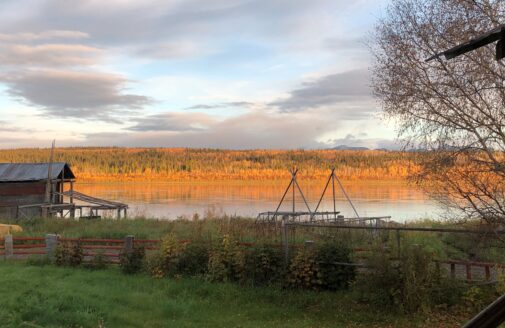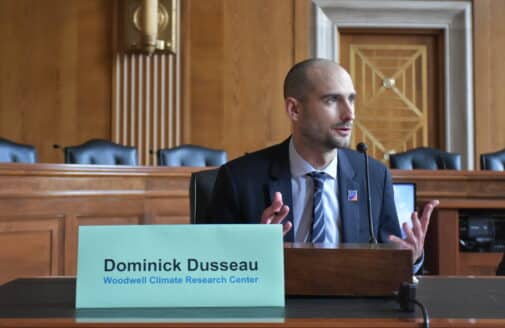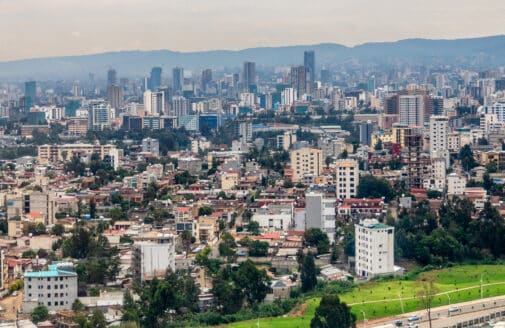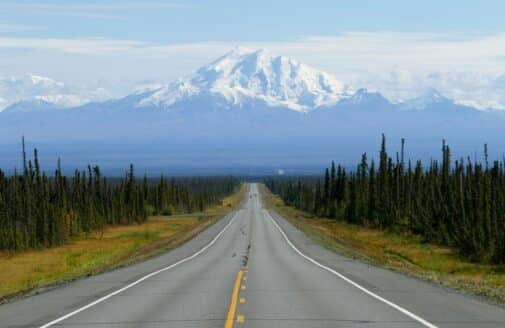New McKinsey report advises climate action for US state and local leaders
Unless dramatic action is taken, global temperatures will continue to rise in the coming decade and, in turn, increase the frequency and intensity of physical climate risks across the United States. In their latest climate action report, McKinsey & Company, with analyses conducted by Woodwell Climate scientists, finds that state and local leaders have an opportunity to prevent billions of dollars in damage and human health catastrophes by curbing carbon emissions and investing in resilience. Already, states and cities have begun to set greenhouse gas emission reduction goals and are developing programs to ease this transition. This report identifies the physical threat posed by climate change, the short-term benefits of climate action, and opportunities for state and local leader responses in 2021.
Woodwell Climate provided extreme heat projections that point to a variety of risks in different regions of the country. The number of lethally hot days will increase across the country, posing the greatest health threat to the elderly. Extended heat waves are projected to impact counties across Texas and Florida. McKinsey researchers also report increased potential for a multi-decade long drought in the Southwest and Central Plains. Woodwell Climate scientists found that by 2050, superimposition of extreme heat and drought will add three to four weeks of severe wildfire risk along the West Coast.
When precipitation does fall, it is expected to accompany extreme weather events. While the frequency of moderate rainfall will decline in the coming thirty years, the frequency of extreme weather events is expected to increase by at least 50% across the country. The report also incorporates an examination of tropical storm risk by Dr. Kerry Emanuel of MIT. That work projects stronger and more destructive hurricanes, raising the risk of coastal flooding.
“All of our calculations are conducted on the time horizon of large capital expenditures,” says Woodwell Climate Risk Program Director Dr. Christopher Schwalm, who has worked closely with the McKinsey team on more than a dozen projects over the course of the past year. “Instead of looking towards the end of the century, we’re focusing on the next thirty years, which is important in the field of climate policy given the constraints of the Paris Agreement and goal of achieving net zero emissions by 2050.”
With these risks in mind, climate mitigation and adaptation are essential to protecting labor productivity and coastal properties. Adaptation protects against the physical threat of unavoidable flooding, wildfires, extreme storms, and prolonged droughts, with the potential to save the country 2.5 billion dollars in climate-related damages. However, dramatic reductions in greenhouse gas emissions are needed to stop the escalating physical and socioeconomic risks. And while many state and local leaders may be hesitant to prioritize climate response in the wake of the COVID-19 pandemic, McKinsey & Company urges immediate action, arguing climate change response could help rebuild economies weakened by the COVID-19 pandemic and provide infrastructure for healthier and more equitable communities.
Strategic climate action could help stimulate the economy, as low-carbon investments, such as renewable energy projects, have been found to create more jobs than environmentally neutral or harmful construction endeavors. Additionally, public transportation projects have been found to create 70% more job-hours than highways. Overall, climate action projects have been found to have a 1.5-fold multiplier effect on economic productivity and to create ten jobs per million dollars invested. McKinsey & Company also note that decarbonization efforts can support health and environmental justice by mitigating the disproportionate impact of air pollution on low-income communities. Phasing out fossil-fuel power generation and internal combustion engines could save over a million American lives in the coming 20 years while lowering healthcare expenses and increasing labor productivity.
The report offers best practices for planning climate response strategies, recommending that state and local leaders develop a thorough understanding of relevant physical risks and transition challenges. Additionally, collaboration between public and private sectors could be critical to offset competing interests while lowering climate-risk exposure. Because low-income and minority communities suffer the most from climate hazards, McKinsey & Company suggests that programs are developed to identify and eliminate disproportionate risks, both physical and socioeconomic. Finally, the report deems that societal costs and benefits, job growth, and feasibility should be quantified and taken into account for all potential adaptation and decarbonization pathways.







